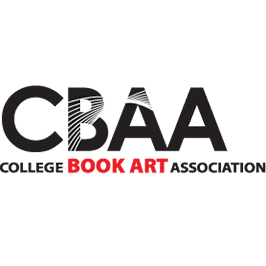When my advanced nonfiction workshop read Claudia Rankine’s Citizen, my students said they didn’t know they “could do that.” What my students meant was that over the course of their academic creative writing careers, they had mostly seen and discussed books that used narrative or thematic threads as their centers, and they thought this was the way to write. But with Citizen,they encountered something new: a book that defied categorization of “essay” or “memoir,” but also a book that showed it was aware it was a book, with deliberate choices about how it would appear and how a reader would interact with it: bright, glossy paper, blank space, color of text, and different typefaces.
I suggested that perhaps our formal education—dictated sometimes, by what our teachers assign to us—prioritize the wrong questions about books. What might happen if instead of asking “what is an essay collection”—a question that prioritizes craft—we asked, “what can be an essay collection,” or more appropriately, “what can be a book?” So much of our experiences in academe imply that books look a certain way, and for creative writers, this implication is doubly stunting. Not only is our writing challenged and critiqued, but the book as a creative object in all of its assembly is almost never talked about, and therefore, a whole realm of meaning-making falls by the wayside.
What if, my class discussed, we conceptualized books that required reader interaction with the book, not just reception of narrative, or braids, or lyric, but also conversation between text and image or text and shape, color, or formatting? What if we decenter our idea of what a book “is” and instead create books that mirror our process, our minds, and reflect design and content choices that embody the whole of who we are as authors—not just leaning on narrative or language or syntax, but thinking of the book as an object that in every way was our project? I brought in books whose presentations required us to rethink what a book could do. We looked at Mark Danielewski’s House of Leaves, Reif Larsen’s The Selected Works of T.S. Spivet, and Davis Schneiderman’s [SIC] (1). One of my students asked if she might borrow Piper Daniels’ Ladies Lazarus, and another asked to borrow Rankine’s Don’t Let Me be Lonely.
In my students’ final projects—query packets which included book descriptions and chapter/essay summaries for the collections they wanted to write—I discovered most of my students had eschewed brainstorming book that looked “normal” (2). Instead, they were conceptualizing projects that challenged their educational histories and the books being published by the big five.
They wanted to author books that acknowledged the acts of creation, production, and reception as equal to, and sometimes more important than, narrative, unifying theme, or execution of craft. One student reproduced and embedded tweets, text messages, and Instagram photos in order to challenge modes of narrative construction, both textually and visually. Another student imagined a digital book that included hyperlinks to playlists the reader would access, turning the experience of reading into one influenced by mood, sound, and subtext created by song lyrics. Another student’s satirical take on the internet age included an essay based on a meme, which he copied and pasted into his query packet, slyly working through eight principles of art, turning what looked like a humorous one-off (the meme) into a deeply conscious critique of how we value digital images.
My students’ prioritization of the book-making process seemed liberating, inspiring, and sometimes disheartening. What had they spent all this time learning about writing for if they had never had the space to think about all the ways writing could find a shape? I take this as a critique of our creative writing programs, but if I’m heartened by anything, it’s that many of my students plan to pursue their projects, to put them out into the world, and I hope by doing so they can be part of a collective seeking to make creative writing more than just about the writing.
(1) The full list of texts we looked at also includes:
Mark Danielewski’s The Familiar series as well as Only Revolutions and The Fifty Year Sword
Shane Jones’ Lightboxes and Crystal Eaters
Judith Kitchen’s Half in Shade
B. J. Hollars’ Dispatches from the Drownings: Reporting the Fiction of Nonfiction
N. Scott Momaday’s The Way to Rainy Mountain
Joan Wickersham’s The Suicide Index
Ander Monson’s Neck Deep and Other Predicaments
Matthew McIntosh’s The Mystery.doc
(2) This became the term by which my class distinguished between essay collections that looked more traditional in form and content and those that engaged less common structures, forms, and presentations.
Gwendolyn Edward’s prose and poetry have appeared in Assay, Crab Orchard Review, Fourth River, Booth, and other journals. She retains a MA from the University of North Texas, an MFA from Bennington College, and is currently pursuing a PhD at the University of Missouri, where she is a teaching fellow.

